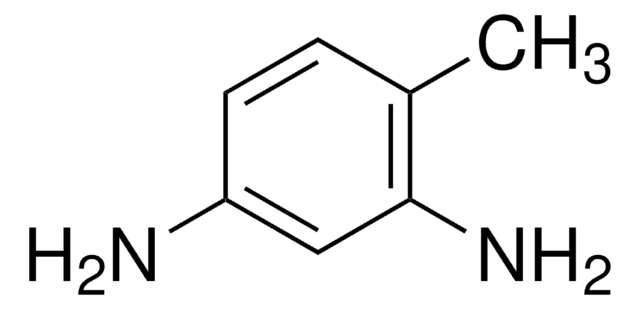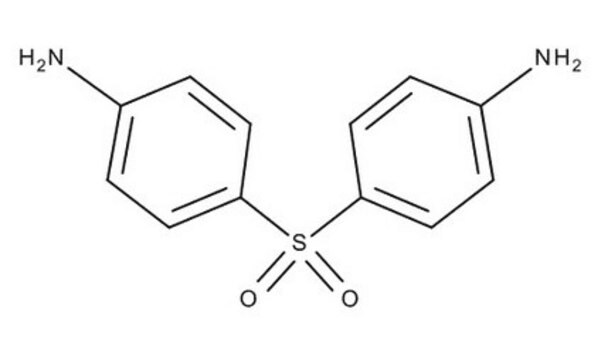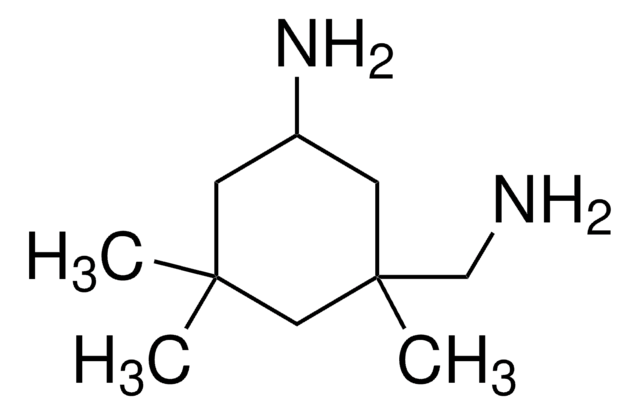32950
4,4′-Diaminodiphenylmethane
≥97.0% (GC)
Sinonimo/i:
4,4′-Methylenedianiline, MDA
About This Item
Prodotti consigliati
Livello qualitativo
Saggio
≥97.0% (GC)
Punto di fusione
88-92 °C
Solubilità
water: soluble
Stringa SMILE
Nc1ccc(Cc2ccc(N)cc2)cc1
InChI
1S/C13H14N2/c14-12-5-1-10(2-6-12)9-11-3-7-13(15)8-4-11/h1-8H,9,14-15H2
YBRVSVVVWCFQMG-UHFFFAOYSA-N
Informazioni sul gene
mouse ... Slc6a2(20538)
rat ... Slc6a3(24898) , Slc6a4(25553)
Cerchi prodotti simili? Visita Guida al confronto tra prodotti
Categorie correlate
Descrizione generale
Applicazioni
- as dummy template for bisphenols imprinting
- in the synthesis of amino modified multi-walled carbon nanotubes/polydimethylsiloxane
- as curing agent to study the kinetics of formation of epoxy resin composites
- in rubber industry as an epoxyresin hardener
Avvertenze
Danger
Indicazioni di pericolo
Consigli di prudenza
Classi di pericolo
Acute Tox. 3 Oral - Aquatic Acute 1 - Aquatic Chronic 2 - Carc. 1B - Muta. 2 - Skin Sens. 1 - STOT RE 2 - STOT SE 1
Organi bersaglio
Liver, Liver,eye - retina
Codice della classe di stoccaggio
6.1C - Combustible acute toxic Cat.3 / toxic compounds or compounds which causing chronic effects
Classe di pericolosità dell'acqua (WGK)
WGK 3
Punto d’infiammabilità (°F)
429.8 °F - closed cup
Punto d’infiammabilità (°C)
221 °C - closed cup
Dispositivi di protezione individuale
Eyeshields, Faceshields, Gloves, type P3 (EN 143) respirator cartridges
Scegli una delle versioni più recenti:
Possiedi già questo prodotto?
I documenti relativi ai prodotti acquistati recentemente sono disponibili nell’Archivio dei documenti.
I clienti hanno visto anche
Il team dei nostri ricercatori vanta grande esperienza in tutte le aree della ricerca quali Life Science, scienza dei materiali, sintesi chimica, cromatografia, discipline analitiche, ecc..
Contatta l'Assistenza Tecnica.













